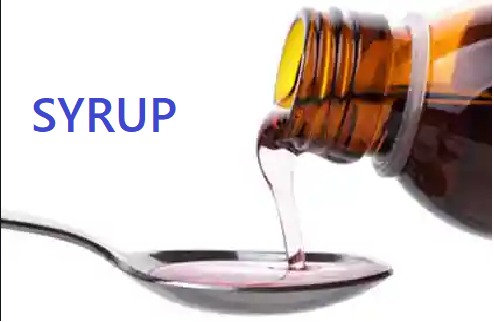PIPERAZINE SYRUP
Piperazine has activity against A. lumbricoides and E. vermicularis. In many parts of the world, it has been replaced by less toxic agents such as mebendazole. However, because of its lower cost, piperazine is still frequently used. Piperazine blocks the helminth muscle response to acetylcholine by altering membrane ion permeability and causing hyperpolarization and decreased action potentials. Flaccid paralysis ensues and the worms are eliminated in the stool.
Piperazine is available as the citrate salt in 250 mg tablets. There is good oral absorption and a small amount of hepatic metabolism; 60% of the drug is excreted in the urine unmodified. Different dosage schedules exist, but a single dose of 75 mg/kg (maximum 4 g) per day for 2 days is effective for ascariasis, and a single dose of 65 mg/kg/day for 7 days is used for enterobiasis.
Side effects include gastrointestinal disturbances, headache, dizziness, and urticaria. Seizures occur rarely, and piperazine is contraindicated in patients who have a history of a seizure disorder. Piperazine and pyrantel pamoate are antagonistic and should not be co-administered.
Piperazine citrate is used as a second-line treatment for treating roundworm infections caused by Ascaris lumbricoides and pinworm infections caused by Enterobius vermicularis (oxyuris). It paralyzes the worm which is then expelled by the digestive tract.
Although it is highly active against Ascaris and Enterobius, it is not commonly used because of its repeated doses while other anthelmintics offer single-dose treatment.
What is the dosage of Piperazine?
Piperazine adipate oral suspension:
For treating roundworm or pinworm infections:
The recommended oral dose for adults and children above 14 years is 1.8g orally every 4 hours three times a day.
• Children below 2 years of age: 600mg, every 4 hours thrice daily
• 2 – 8 years of age: 1.2g every 6 hours twice a day
• 8 – 14 years of age: 1.2g every 4 hours three times daily
• It is recommended to repeat the treatment schedule after 2 weeks.
What are the other precautions for Piperazine?
• Stool examination is required in patients before and after 2 weeks of piperazine treatment for ascariasis.
• Cellophane tape swabbing of the perianal area to determine the presence of eggs and examination to detect the adult worms before the treatment after 1 week of the treatment for enterobiasis is recommended.
PURPOSE: This Master formula is written to describe the formulae, manufacturing procedure, specifications, and packing details of dosage form.
SCOPE: This MFR is performed and is applied during the manufacturing of dosage form.
RESPONSIBILITY / ACCOUNTABILITY: It is the responsibility of Manufacturing Chemist to follow and adhere to this SOP. The Production Pharmacist, QC/QA Manager and cGMP Administrator are accountable for the strict adherence to the master
COPY ISSUED TO:
1. Master Copy : Manager Quality Assurance
2. Copy No. 1 : Production Pharmacist
3. Copy No . 2 : Manager Quality Control
4. Copy No . 3 : cGMP Administrator
5. Copy No. 4 : Liquid Section
| PRODUCT NAME:PIPERAZINE SYRUP | BATCH SIZE: 600 LTRS. |
| PRODUCT REFERENCE CODE: | UNIT SIZE: 30 ML |
| GENERIC NAME: N.A. | PACK SIZE: 12 x 12 x 30 ML |
| DOSAGE FORM: SYRUP | STRENGTH: N.A. |
| DEPARTMENT: LIQUID DEPARTMENT | EXPIRY DATE: AFTER 24 MONTHS FROM THE DATE OF MANUFACTURING |
COMPOSITION:
Each 5 ml contains:
Piperazine Citrate U.S.P.
Equ. To Piperazine Hexahydrate 500 mg
SPECIMEN LABEL :
EQUIPMENTS TO BE USED:
| SR. NO. | NAME OF EQUIPMENT | ASSEMBLING
AS PER SOP NO. |
CLEANING
AS PER SOP NO. |
| 1 | Sugar Syrup Manufacturing Tank | ||
| 2 | Charging Tank – III – 1000 Ltrs. | ||
| 3 | Filter Press | ||
| 4 | Storage Tank – I – 1000 Ltrs | ||
| 5 | Linear Bottle Washing Machine | ||
| 6 | Linear Bottle Filling and Sealing Machine | ||
| 7 | Automatic Bottle Labelling Machine | ||
| 8 | Shrink Packing Machine |
RAW MATERIALS:
| S.NO. | INGREDIENTS | STD | Theoretical Quantity Req. | Overages % | Total Quantity Used |
| 1. | CITRIC ACID | I.P. | 0.150 | 0.150 KGS | |
| 2. | GLYCERINE | I.P. | 30.000 | 30.000 KGS | |
| 3. | METHYL PARABEN SODIUM | I.P. | 0.600 | 0.600 KGS | |
| 4 | ORANGE FLAVOUR | F.G. | 1.500 | 1.500 LTR. | |
| 5 | PROPYL PARABEN SODIUM | I.P. | 0.120 | 0.120 KGS | |
| 6 | PIPERAZINE CITRATE | U.S.P | 75.000 | 10.00 | 82.500 KGS |
| 7 | SODIUM BENZOATE | I.P. | 3.000 | 3.000 KGS | |
| 8 | SUNSET YELLOW SUPRA | I.P. | 5.400 | 5.400 GMS | |
| 9 | SUGAR | F.G. | 240.00 | 240.00 KGS | |
| 10 | TARTRAZINE SUPRA | F.G | 0.030 | 0.030 KGS |
Packing materials:
| S.NO. | NAME OF THE MATERIAL | THEORETICAL QUANTITY REQ. | FOR
RECORD |
TOTAL QUANTITY USED |
| 1. | 32 ML AMBER ROUND BOTTELS | 20000.000 | 20000.00 NOS | |
| 2. | ADHESIVE TAPE ROLL BROWN | 3.000 | 3.000 NOS | |
| 3 | LABEL | 20138.00 | 3.000 | 20142.000 NOS |
| 4 | UNIT CARTON | 20000.000 | 2.00 | 20002.000 NOS |
| 5 | GUM ACCACIA | 2.000 | 2.000 KGS | |
| 6 | CORRUGATED BOXES N – 08 | 139.000 | 139.000 KGS | |
| 7 | PILFER PROOF CAPS 25 MM | 20000.000 | 20000.000 NOS | |
| 8 | SHRINK FILM 220 X 220 MM | 1667.000 | 1667.000 NOS |
MANUFACTURING SPECIFICATION:
1. Average fill of each Bottle is 30 ml.
2.Volume variation limit allowed in each filled Bottle is 30 ml to 31 ml.
3.Make up the final volume of the syrup accurately.
4.Filter the completely charged batch using Filter Press L-21 by operating it as per its SOP.
5.Transfer the syrup from charging tank to storage tank after complete charging of batch.
6.Mix the batch, Fill the bottles and also perform the primary packing of bottles at temperature not more than 250 C and Relative Humidity not more than 40.
Yield:
·Theoretical Yield is 20000 Bottles.
·Expected Practical Yield is 20000 + 2% Bottles.
Packing Details:
1.Wash the bottles on Linear Bottle Washing Machine L-24 and operate it as per its SOP.
2.Transfer the Syrup from storage tank to digipack Bottle Filling and Sealing Machine L-25 for filling and sealing of the bottles as per its SOP No- SOP/OL/017/MO/I.
3.Fill 30 ml syrup in amber glass bottle and use 25 mm PP Cap to seal the bottle mouth.
4.Inspect the each filled and sealed bottle for proper sealing and presence of the foreign particles, if any.
5.Label every inspected bottle by using the Automatic Bottle Labelling Machine L-26 as per its SOP.
6.Pack each filled and sealed bottle in unit carton individually.
7.Make a group of 12 bottles packed in unit cartons.
8.Wrap this bundle in the thermoplastic film and shrink pack it by operating Shrink Packing Machine L-27 as per its SOP.
9.Pack such 12 shrinked packets in the Corrugated box N-08. Thus each corrugated box contains 12 x 12 x 30 filled and sealed bottles.
10.Seal each corrugated box with adhesive tape and label it properly by affixing the specified label.
MANUFACTURING PROCESS:
I) Preparation of Sugar Syrup:
1. Take DM water 50 Ltrs into Stainless Steel Steam Jacketed Sugar Syrup Preparation Tank L-03.
2. Run the steam into the jacket so as to heat the water.
3. Add 240 kgs of sugar into the tank and start stirring by operating the tank .
4. Heat continuously till the sugar dissolves completely to give uniform Sugar Syrup.
5. Transfer the prepared Sugar Syrup to Sugar Syrup Storage Tank L-04 through transfer pump.
6. Transfer the prepared Syrup from Sugar Syrup Storage Tank to Charging Tank L-08 through transfer pump.
II) Addition of Ingredients into the Charging Tank L-08 while stirring continuously:
1.Dissolve 0.600 kgs of Methyl Paraben Sodium, 0.120 kgs of Propyl Paraben Sodium in 3 Ltrs of DM water and add to the bulk batch.
2.Dissolve 0.150 kgs of Citric Acid in 1 Ltrs of DM water and add to the bulk batch.
3.Dissolve 3.0 kgs of Sodium Benzoate in 10 Ltrs of DM water and add to the bulk batch.
4.Dissolve 75.0 kgs of Piperazine Citrate in 150 Ltrs of DM water and add to the bulk batch.
5.Add 30 kgs of Glycerine, 1.5 Ltrs of Orange Flavour and 6 x 450 ml of Spirit chloroform to the bulk.
6.Dissolve 5.4 Gms of Sunset Yellow Supra and 0.030 kg of Tartrazine Supra in 1 Ltr of DM water and add to the bulk batch.
7.Make up the volume with DM water to 600 Ltrs and mix until homogeneous.
8.Check the pH of Solution to be in between 4.5 – 5.0.
9.Filter the batch through Filter Press L-21 by operating it as per its SOP and transfer it to the Storage Tank.
10. Send the sample to Quality Control Department for bulk testing.
IN-PROCESS CONTROLS:
The following in-process controls should be maintained during the processing:
1.Check Raw materials used for manufacturing purpose are all approved materials and have ‘Released’ labels fixed on it.
2. All weighed Raw materials should be counter-checked by Assistant Manufacturing Chemist. If any discrepancy is noticed, it should be immediately brought to the notice of Production and QC/QA Manager.
3.Physical characteristics of Raw material like colour, odour, and consistency are checked before compounding.
4.Final volume should be made as per Standard Operating Procedure using correct dipstick in the Assistant Manufacturing Chemist.
5.pH of the bulk should be checked and it should be with in specified limits.
6.Bulk sample should be sent for analysis to Quality Control Department before starting the filling and sealing stage.
7.The Assistant Manufacturing Chemist should check intermittently filled volume at 30 minutes interval and record for the same should be kept in Batch Manufacturing Record.
8.The net volume should be checked for all the filling nozzles and in no case, net volume should be less than volume claimed on the label.
Limit for Volume Variation: Volume claimed on the label + 2ml
9.Visual inspection of filled and sealed bottles should be done as per SOP and the record of the same should be kept in the Batch Manufacturing Record.
10.Suspensions should be filled under constant slow speed stirring to maintain uniformity of contents.
11.The labels and cartons should be checked thoroughly for proper batch coding.
12.Intimation should be sent to Quality Control Department for finished product sampling and testing.
13.After the completion of labelling and packaging, the coded labels and cartons should be accounted for and rejected printed material should be destroyed in the presence of QC/QA Manager. Maintain the destruction of the same in the Batch Manufacturing Record.
14. It will be ensure that filling or packaging equipment has been properly cleaned.
15.Filling or packaging of next product should not commence until the IPQA has given the ‘Line Clearance’.
OTHER RELATAED POST – MASTER FORMULA OF VITAMIN B-COMPLEX CAPSULES

